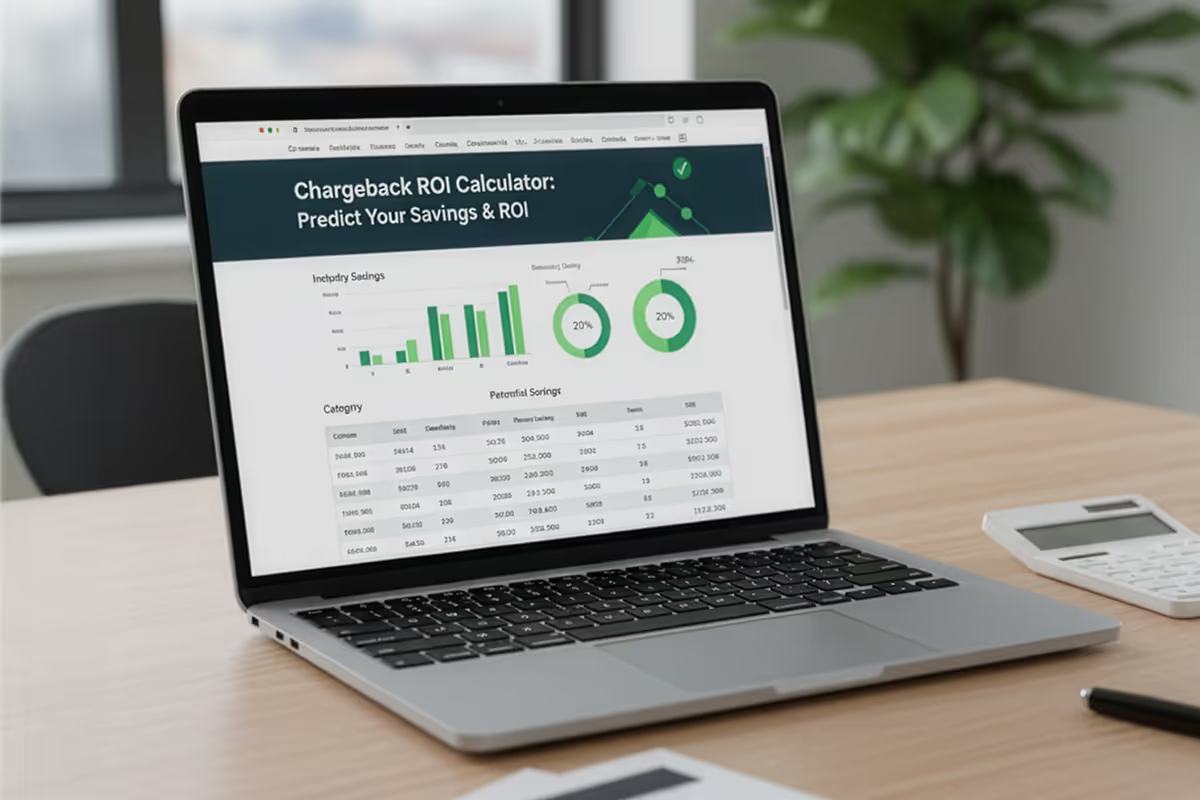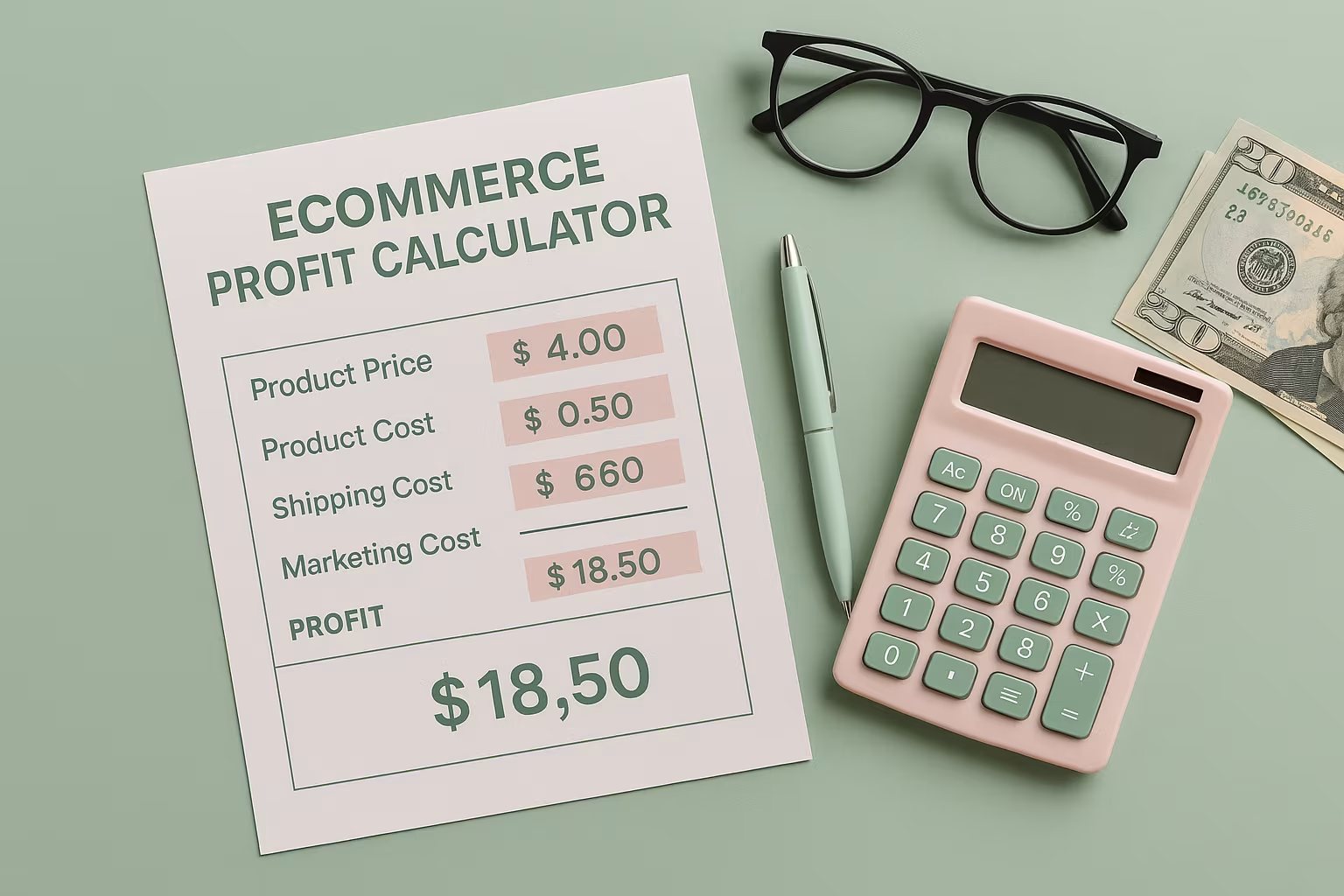
Profitability in e-commerce isn’t just about how much you sell; it’s about how much you keep. That’s why a reliable ecommerce profit calculator is more than a nice-to-have.
It’s your strategic weapon for surviving razor-thin margins, unpredictable ad costs, and platform fees that quietly eat away your earnings.
Whether you’re selling wellness products or testing viral SKUs through TikTok Shop, understanding your per-sale profit is where real scale begins.
Break Down Every Dollar: What Ecommerce Profit Calculator Tells You
This calculator isn’t just for basic math. It gives e-commerce sellers a full-funnel view of profitability across seven key inputs. Here’s how each one influences your bottom line:
Product Cost (USD)
The base cost per unit is paid to your supplier. Always include your wholesale product cost before fulfillment or shipping fees. If you're customizing flavors, labels, or formulas, this base cost may vary by SKU and should be updated regularly.
Selling Price (USD)
Your retail price is the number shown on your product page. This should reflect any planned discounts or bundle offers. It's also smart to adjust this field seasonally if you run price-based promotions or use dynamic pricing tools.
Shipping Cost (USD)
Whether you or your supplier handles fulfillment, this cost directly affects unit economics. With Supliful, use the actual per-order shipping rate. If you offer free shipping, remember this cost still comes out of your margin, so don’t leave it blank.
Platform Fees (% of Sale)
Shopify Payments, app subscriptions, TikTok Shop fees, all of these reduce your actual take-home amount. Enter the combined percentage here. Be sure to include payment processor fees, marketplace commissions, and recurring app charges tied to the checkout or post-sale flow.
Advertising Cost per Sale (USD)
How much are you spending on Meta Ads, TikTok campaigns, or influencer commissions to get a single sale? Enter your blended CAC here. This number should come from actual data, not just guesses, and can shift dramatically based on seasonality or platform changes.
Packaging Cost (USD)
Include custom box costs, printed inserts, tissue wrap, or anything else unique to your branding. Supliful users with upgraded branding should calculate this carefully. Even seemingly minor touches like sticker seals or branded tape can impact per-unit cost when scaled.
Return / Refund Rate (%)
Returns and refunds lower real profitability. A 10% refund rate means 1 in 10 sales nets you $0.
The calculator factors this loss into your profit per unit and margin. Products with higher refund risks, such as skincare or food supplements, should be modeled conservatively to stay realistic.
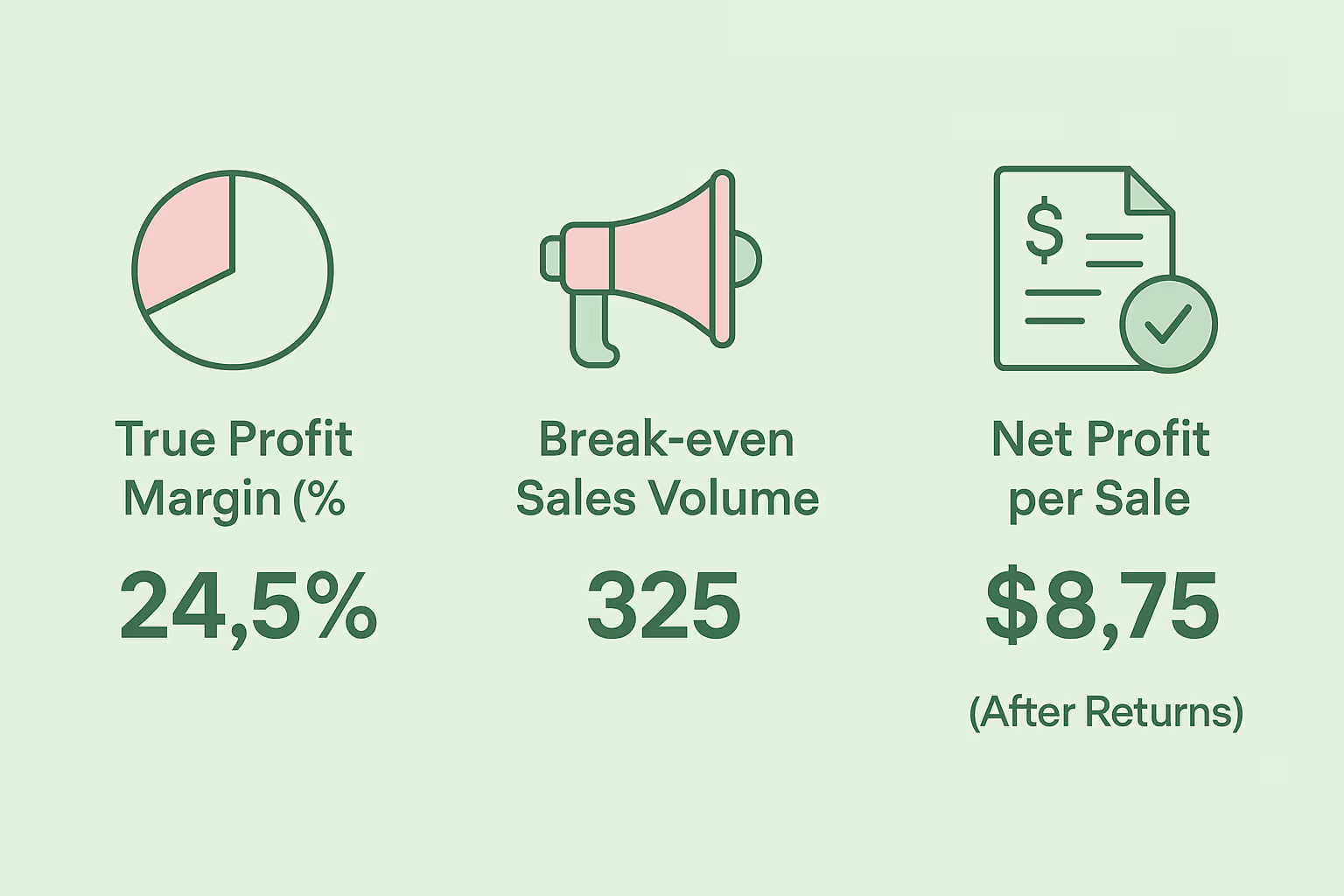
Why Profit Margin Alone Doesn’t Tell the Whole Story
Profit per unit is only part of the equation. Real success comes from understanding how all your numbers interact, especially when it comes to ad spend, platform fees, and operational costs.
This is where the e-commerce profit calculator becomes an essential decision-making tool. It highlights the numbers that sellers often overlook but that ultimately determine whether your business scales or stalls.
Here are the three profitability insights you unlock instantly:
- True Profit Margin (%): The percentage of revenue you keep after factoring in product cost, shipping, platform fees, and ad spend, not just the surface-level markup.
- Break-even Sales Volume (Ad Spend): The number of sales needed to fully recover your advertising investment, helping you understand whether your CAC is sustainable.
- Net Profit per Sale (After Returns): Your adjusted profit per unit, after accounting for refunds and return rates, provides a realistic view of what you keep.
Seeing these numbers side by side gives you the clarity to scale with confidence, or pull back before burning through budget.
Real-World Use Cases: Where This Calculator Truly Shines
This isn’t just for first-timers. Even established brands can unlock value using the calculator strategically. Some smart use cases include:
- Testing New SKUs: Before committing to label design and inventory, simulate margins on every variant.
- Seasonal Promotions: Recheck profit when discounts or free shipping offers change unit economics.
- Ad Campaign Scaling: Run margin checks before doubling ad spend.
- Reevaluating Return Policies: See how a 15% refund rate vs. 5% affects profitability.
- Pricing Strategy Adjustments: Raise your AOV while monitoring margin impact.
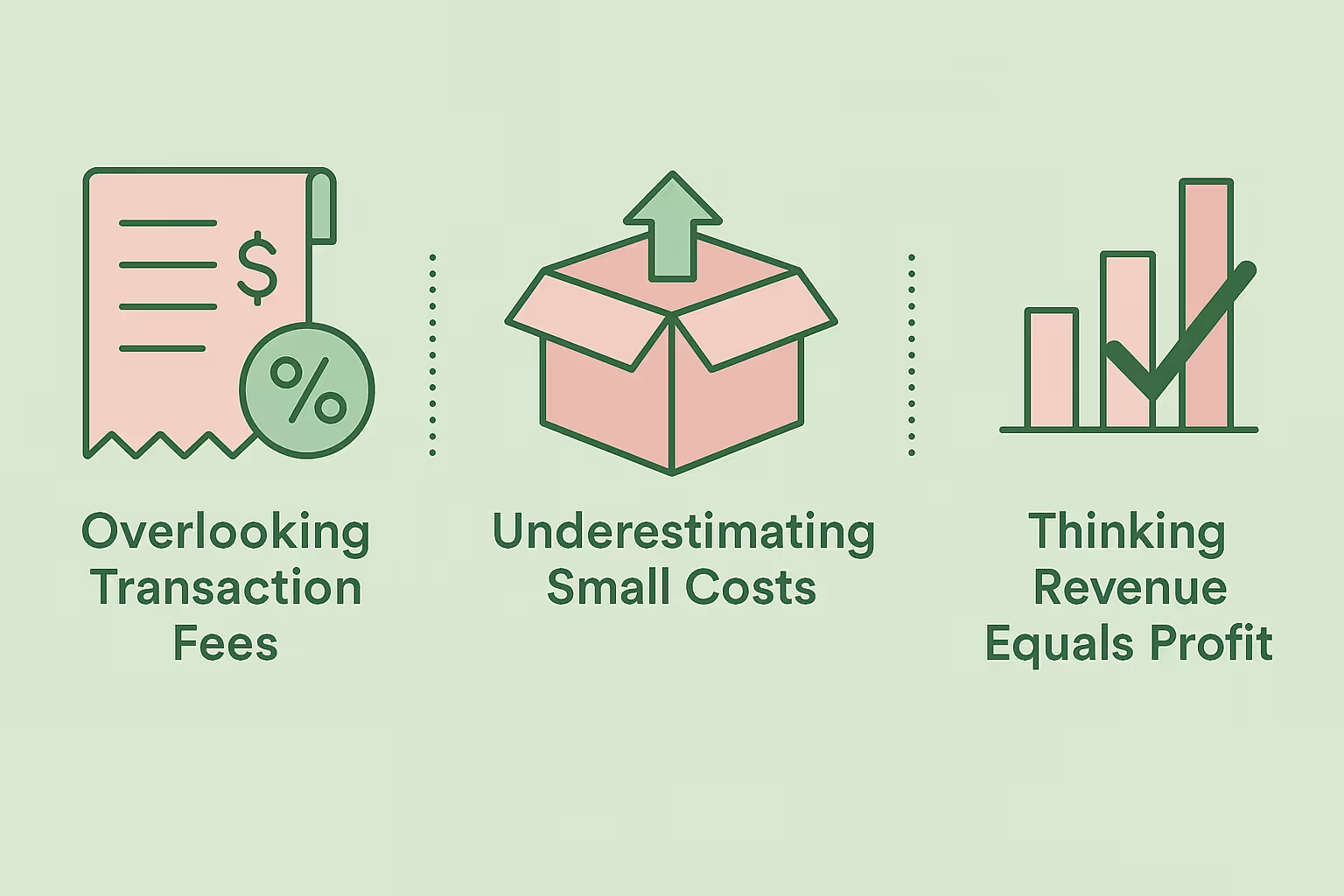
What Most Sellers Get Wrong About Profitability
Many sellers underestimate how quickly small costs add up. Transaction fees from Shopify, Stripe, and third-party apps can quietly consume 4–6% of every sale. Add in premium packaging, like branded boxes or inserts, and your margins shrink fast, especially on low- to mid-priced products.
Focusing solely on revenue numbers without accounting for these hidden costs leads to a distorted view of your actual profit.
Another common mistake is treating all orders and customers as equal. In reality, acquisition costs vary across ad sets, and some products come with higher return rates, especially in niches like wellness or apparel. Ignoring these differences inflates profit expectations.
By factoring everything into the ecommerce profit calculator, sellers get a clear, grounded view of what they truly earn per sale and where they’re leaking money.
Insider’s Edge: Optimize Packaging to Hack Shipping Brackets
This is a move only seasoned e-commerce sellers think about: Resizing your packaging can drastically reduce shipping costs.
Shipping carriers use DIM (dimensional weight) to charge based on volume. That means even small adjustments, like cutting 2 cm from the box height, can drop you into a lower pricing tier.
Before you finalize packaging specs, plug both versions into the calculator to see the long-term margin impact.
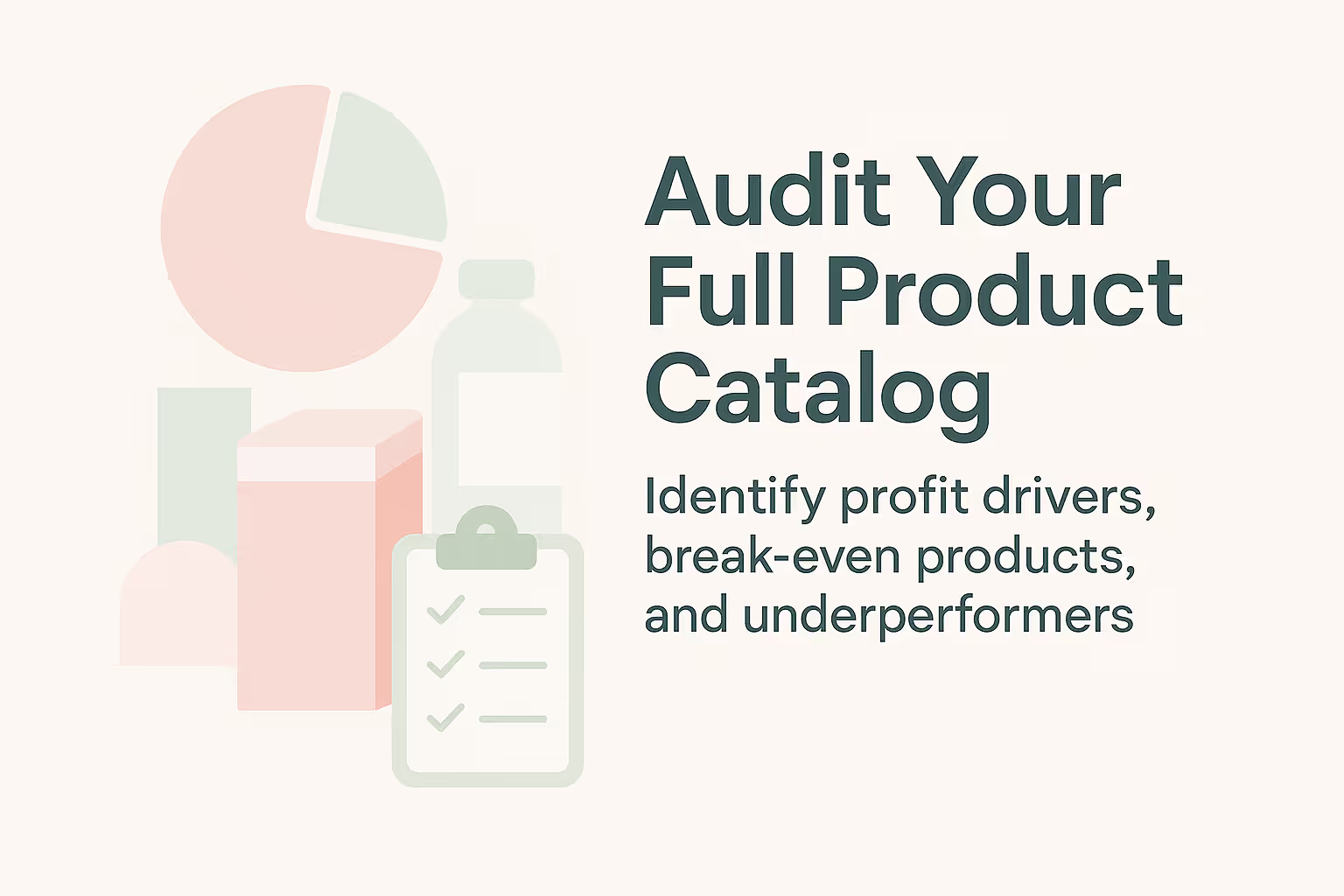
Beyond One Product: Use This Tool to Audit Your Full Catalog
If you're selling multiple SKUs, like bundles, flavor variants, or subscription kits, run each through the calculator. It helps reveal:
- Which products carry your best margin (your “profit drivers”)
- Which are break-even (but maybe great for LTV or upsell flow)
- Which are secretly dragging down performance
This level of granularity turns casual sellers into optimized operators.
Stay Profitable by Checking These Key Numbers Regularly
Profitability isn’t set-it-and-forget-it. Costs shift, platforms update, and customer behavior changes over time, which means your margins can quietly erode without regular check-ins. To stay ahead, use the e-commerce profit calculator whenever key variables change.
At a minimum, revisit the calculator when any of the following changes occur:
- Your product cost (new supplier, new MOQ, or ingredient cost shift)
- Your ad costs (new campaign or platform)
- Your platform fee structure (Shopify plan or app stack changes)
- Your shipping rate (volume-based fulfillment pricing)
- Your return rate (due to product issues, seasonality, or policy updates)
Pro operators use it monthly, or before launching any new SKU, bundle, or campaign.
Don’t Scale Blind, Use Profit as Your Compass
The e-commerce landscape is full of distractions, new platforms, influencer trends, and AI-generated creatives. But all of it is noise without this one clear signal: profit per sale.
Use this e-commerce profit calculator to clarify your numbers, simplify decision-making, and build a business that pays. It’s the difference between growing fast and growing smart.
FAQ
Related blogs
.avif)
Price Elasticity Of Demand Calculator: Predict Revenue Impact in Seconds
.avif)
High-Low Method Calculator: Discover Your True Fixed and Variable Costs
.avif)
Dynamic Pricing Calculator: Optimize Margins and Sell Smarter With Every Click
